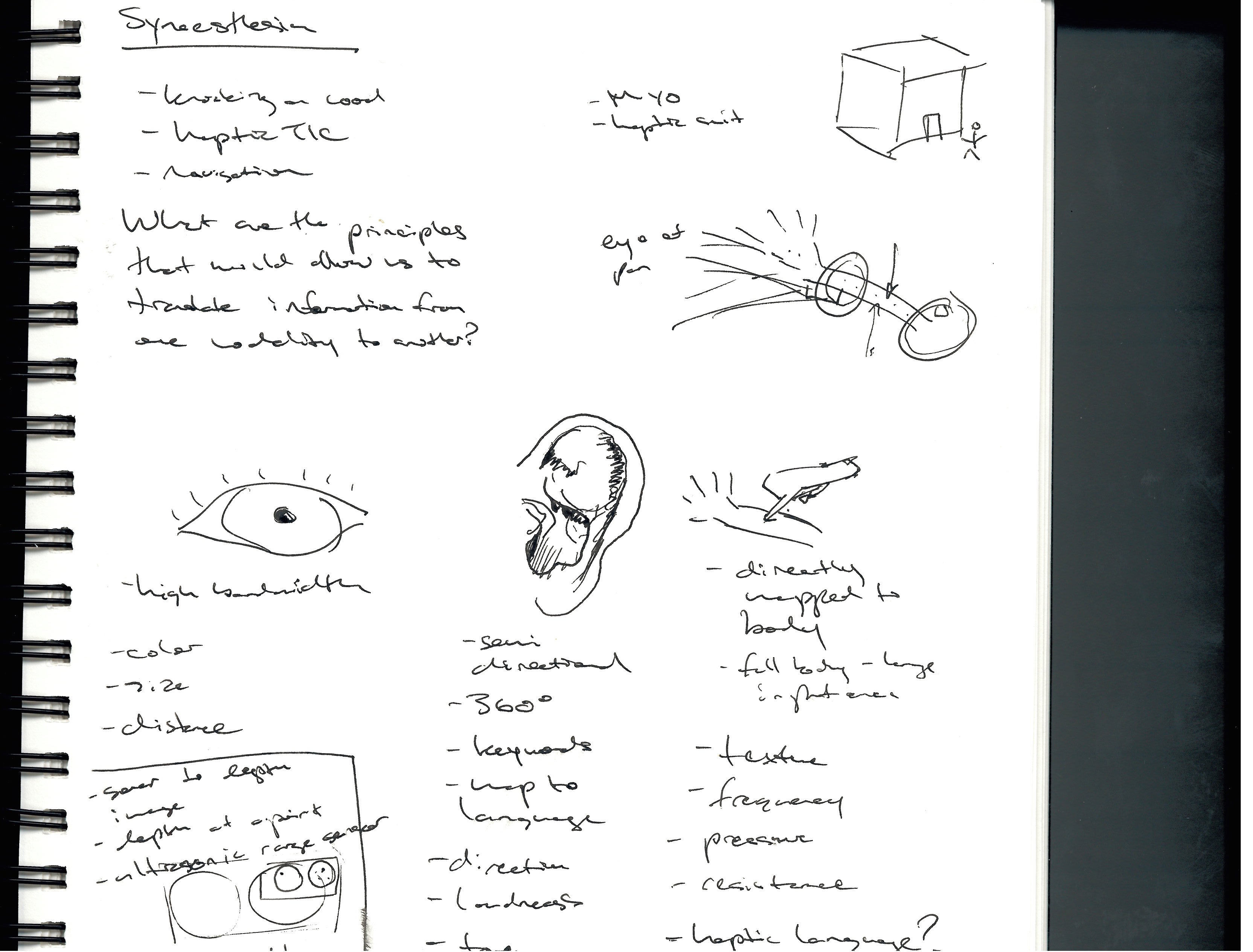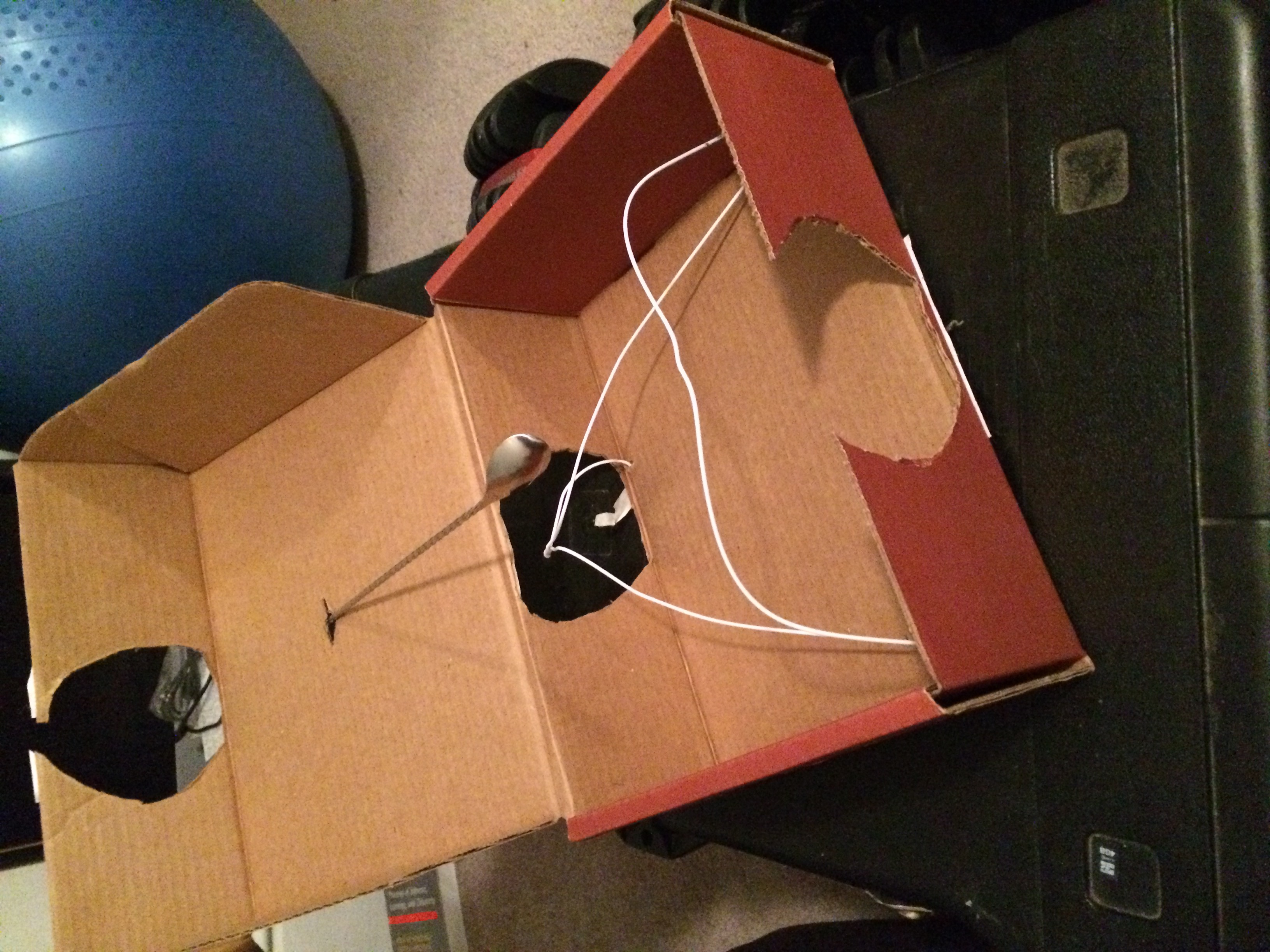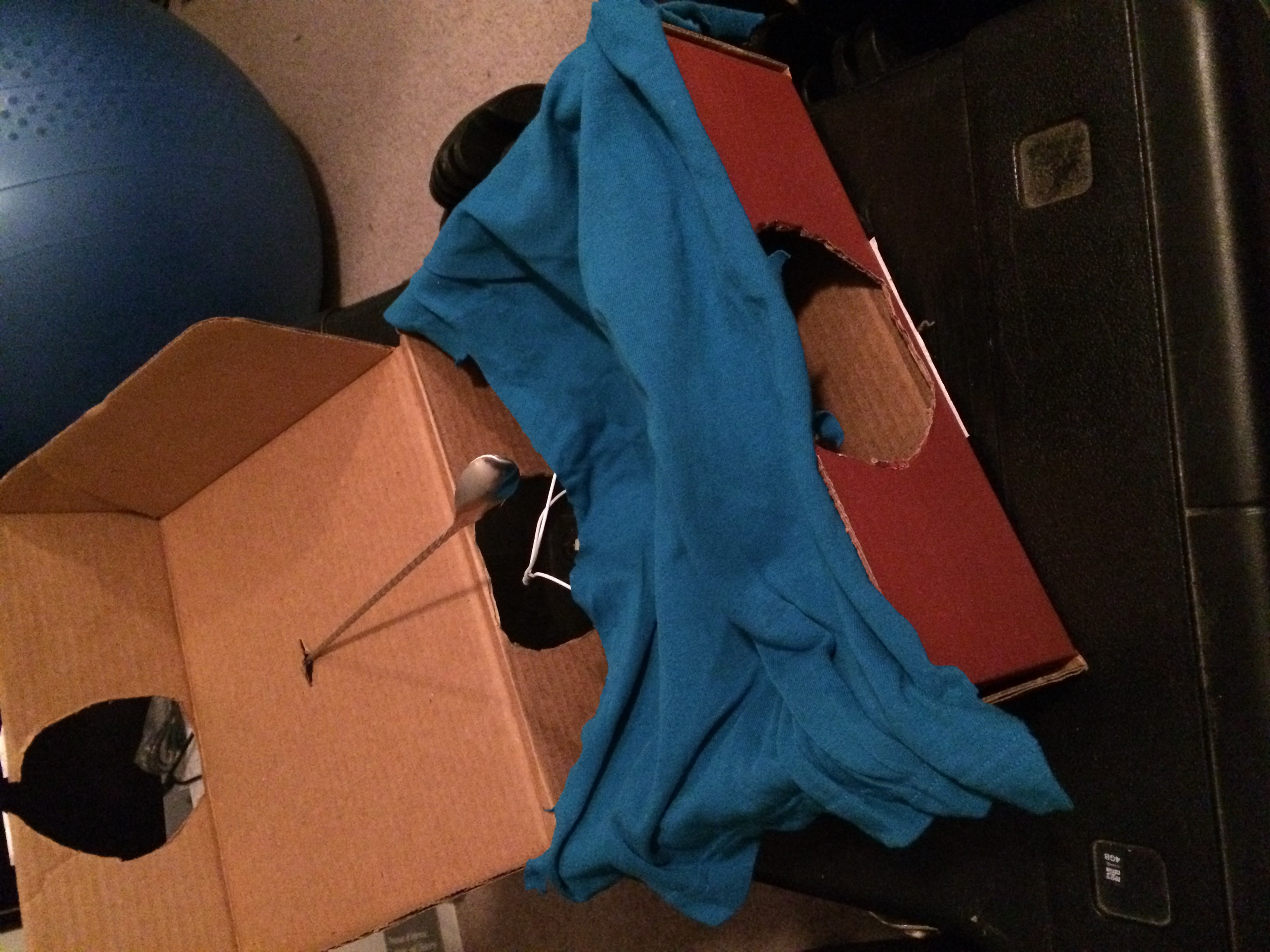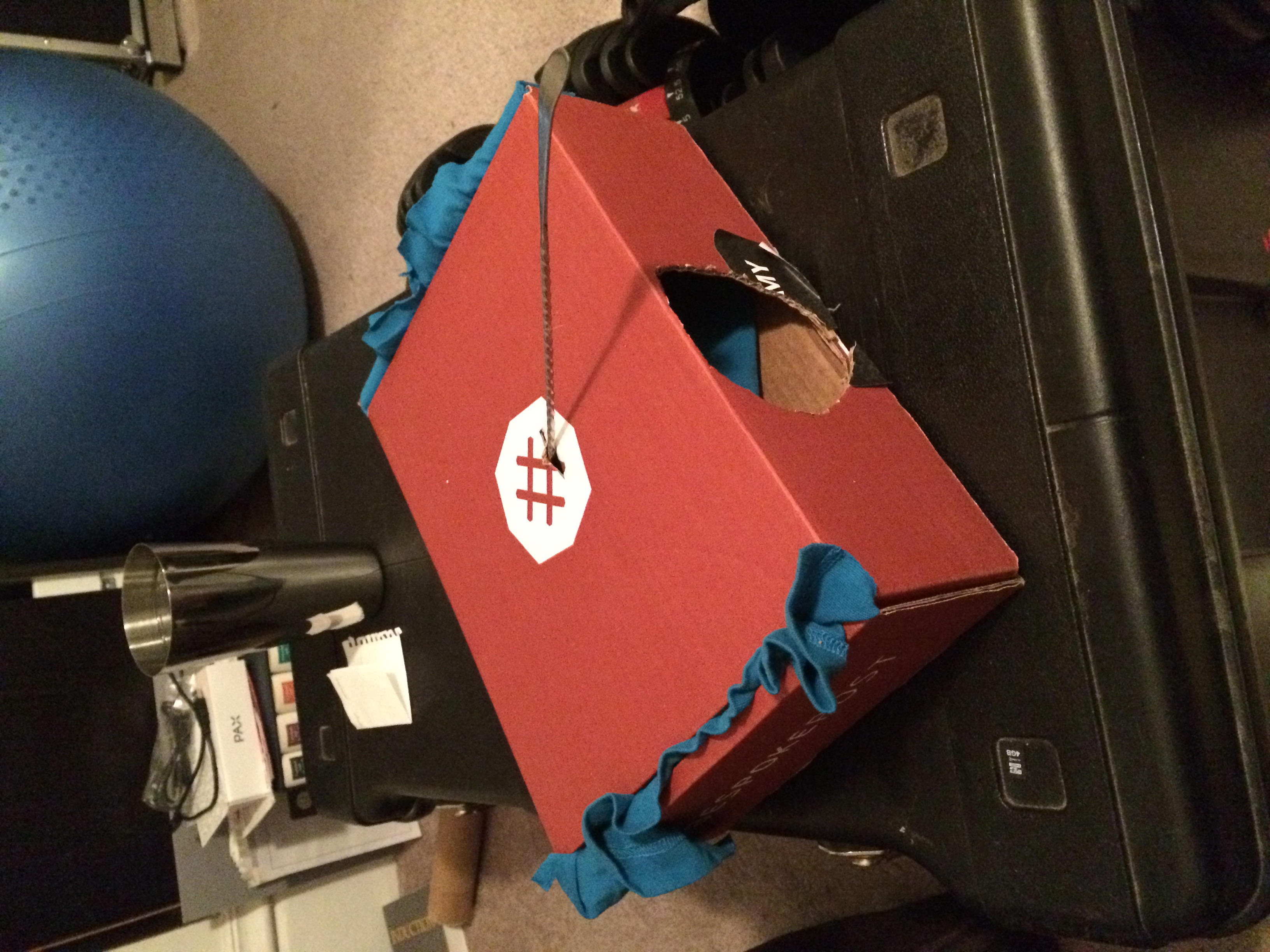Ghost Detector is an experiment in generative sensation, specifically in communicating information through haptics.
For my MHCI capstone project I am working on promoting situational awareness for first responders. One of the main challenges first responders face is sensory overload, especially on the visual and auditory channels. What I would like to explore is translating information that would typically arrive as visual or auditory information and translate it into an intelligible pattern of touch; a form of directed synesthesia.
While the information being communicated is important, what I want to focus on is the output sensations and their natural interpretations. I am inspired in large part by Method’s Henri, a box for experimenting with audio and visual output for peripheral displays. Rather than start with what information they want to communicate, they start with the sensation and work backwards to map our natural interpretations to data. By making a device to detect “ghosts,” I can be somewhat arbitrary in what data I use as input and focus solely on the user’s interpretation. The ghosts might be constructed from data such as thermal imaging, distance, CO2, or sound — all things that could be important for first responders as well.
On the sensation side, pressure, location, and vibration pattern are the obvious candidates for output, but I would also like to look at how texture can be used to modulate the other variables.
Preliminary sketches to map out information on different channels and how they can be shifted:


Cardboard Prototype (I don’t know why these are rotated, they are vertical literally everywhere else):


